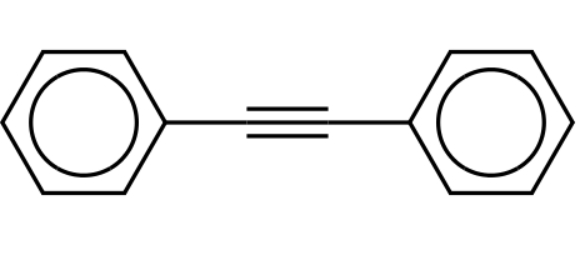Background and overview[1]
Alkyne derivative diphenylacetylene occupies an important position in organic synthesis. Many natural products, pharmaceutical molecules and polymeric materials contain alkyne structures or are synthesized from simple alkyne compounds. Therefore, a large number of The method of synthesizing alkyne derivatives came into being. The classic Sonogashira coupling is one of the most commonly used synthesis methods, that is, under the co-catalysis of palladium and copper, the coupling reaction of aryl halides and terminal alkynes produces disubstituted alkyne compounds. However, the classic Sonogashira coupling reaction requires a copper salt as an auxiliary catalyst to complete the reaction. The alkynyl copper intermediate produced during the reaction is a very active compound that is prone to self-coupling in the air or in the presence of oxidants to form co-catalysts. Conjugated diyne compounds greatly affect the efficiency of the reaction; importantly, Sonogashira coupling has a good effect on electron-rich alkynes, but is not very compatible or can only be obtained for electron-deficient alkynes. There are very few target products. Therefore, in order to overcome these shortcomings, it is particularly important to develop methods with wider applications and more efficient reactions to replace or supplement existing synthetic methods.
Structure

Preparation[2]
Diphenylacetylene is prepared as follows: add 0.5mmol nitrobenzene, 0.6mmol phenylacetylene, 0.05mmolPd(acac)2, 0.05mmolCuI, 0.1mmolBrettPhos, 2.0mmoli-Pr2NH and 10mL into a 50mL double-necked flask at room temperature. Toluene, then place the flask in an oil bath reactor with magnetic stirring and react at 100°C for 18 hours. After the reaction is completed, 10 mL of n-hexane is added for extraction and separation, and the product diphenylacetylene is obtained through column chromatography with a yield of 93%. Diphenylacetylene is a white powder 1HNMR (500MHz, CDCl3): δ7.32-7.37 (m, 6H), 7.52-7.56 (m, 4H).
Main reference materials
[1]CN201910072622.8 A method for the preparation of palladium-catalyzed aryl alkynes
[2]CN201810202131.6 A method for preparing aromatic alkynes by transition metal-catalyzed cross-coupling of nitroarenes and terminal aryl alkynes

 微信扫一扫打赏
微信扫一扫打赏

